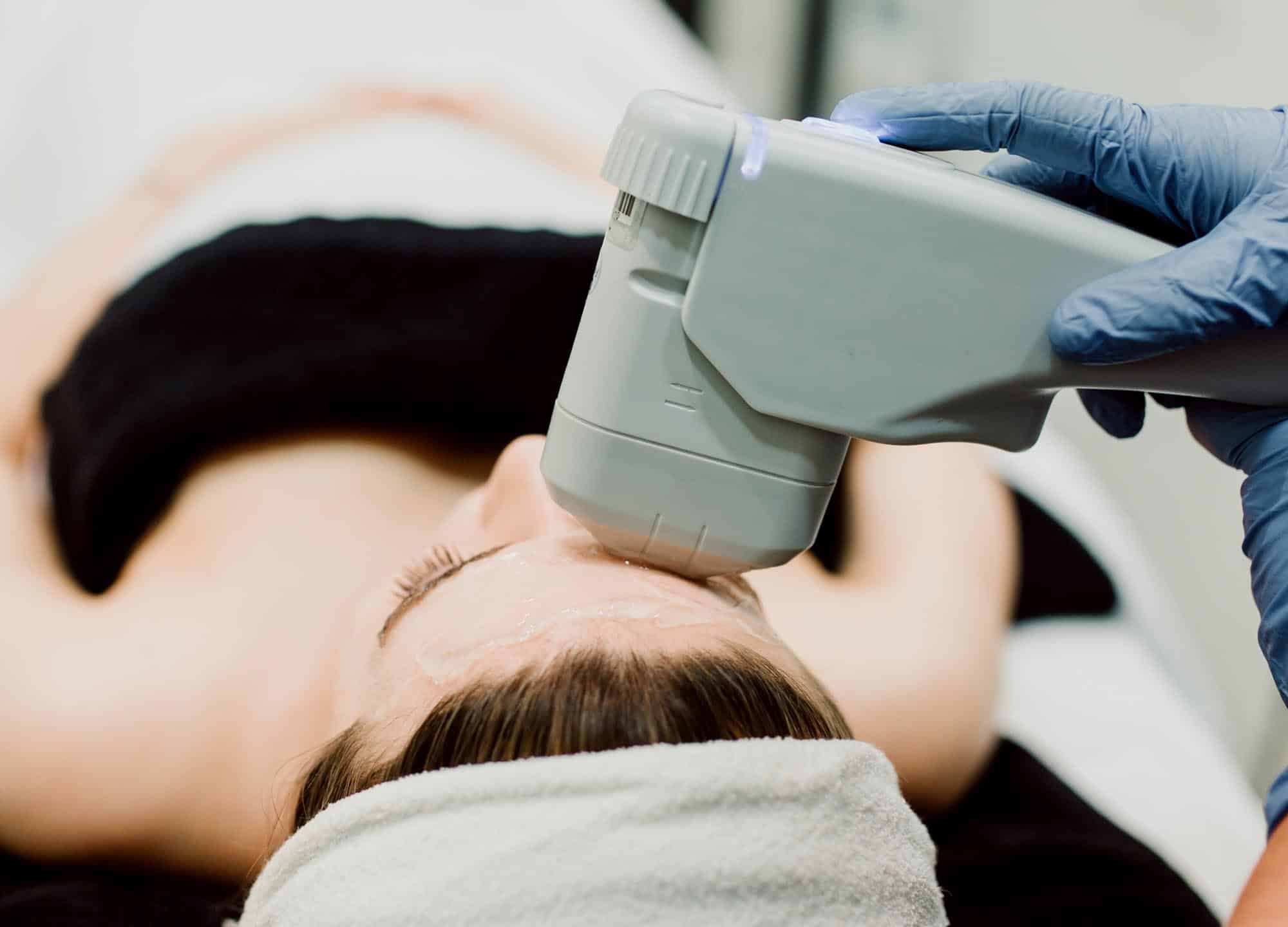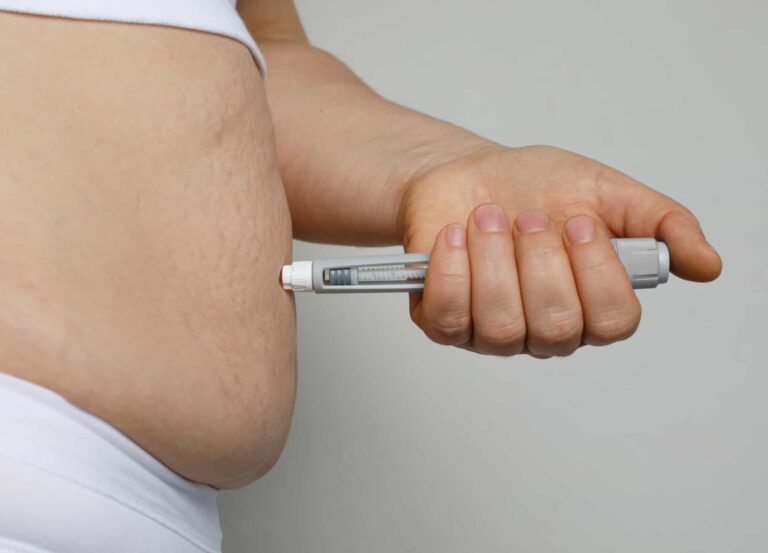With beauty gurus of all kinds contributing content galore, social media has become an amazing educational mecca for skin nerds—and we are here for it. But lately, the word nerd in us has noticed more and more experts using the term laser to refer to any and all manner of energy-based derm devices. While it irks us more than it probably should, we do understand this urge to group gadgets together under a familiar umbrella. After all, the catalogue of tissue-altering technologies (to oversimplify the scope of these machines) is constantly expanding, with each innovation stretching our beauty lexicon to the brink. One week, we’re talking high-intensity focused electromagnetic energy for muscle toning; the next, it’s fractionated radiofrequency microneedling for collagen remodeling. So yeah, “lasers,” we get it—but we’re still sticklers for semantics. Ahead, dermatologists clarify the differences between true lasers and the many other energy-based tools they reach for daily.
What makes a laser a laser?
Its name, for starters: laser is an acronym for light amplification by stimulated emission of radiation. (Radiation, in this sense, simply implies energy traveling as rays or particles; laser radiation is very different from the ionizing kind associated with X-rays and radioactive materials.) Unlike ordinary light, which is made up of many wavelengths, or colors, the beam emitted by a laser is monochromatic. “A laser uses a single wavelength in the electromagnetic spectrum, usually in the visible light or infrared range,” explains Dr. Omar Ibrahimi, a board-certified dermatologist in Stamford, Connecticut.
Because laser beams are tight and narrow, their energy is concentrated and can be used to seek and destroy specific targets with precision and predictability—and “without causing significant thermal damage to the surrounding skin,” says Dr. DiAnne Davis, a board-certified dermatologist in Dallas.
A laser’s intended bull’s-eye can range from the red hemoglobin in blood vessels and birthmarks to the dark pigment in a melasma splotch or hair follicle to the rainbow of inks in a regrettable tattoo. Water and fat can also serve as targets for certain lasers.
What kinds of issues can lasers treat?
Many lasers are unparalleled stain removers, while others shine in the rejuvenation department.
Spider veins, bruises, fresh scars, rosacea
For common vascular issues, doctors lean on lasers specifically engineered to hit hemoglobin and vaporize vessels—namely pulsed dye lasers (like the Vbeam) and KTP lasers (the Excel V, for instance). The KTP is “rarely used on dark skin types, because melanin is a competing target,” notes Dr. Paul Friedman, a board-certified dermatologist in Houston. The Vbeam, however, can be used on melanated skin, he says, when tuned to conservative settings.
Brown spots and tattoos
Pigment-seeking lasers—the alexandrite, ruby, Nd:YAG, and picosecond varieties—home in on the melanin naturally present in our skin and hair follicles as well as foreign pigments, like tattoo ink. The Nd:YAG and pico lasers tend to be safest for skin of color.
Widespread sun damage and acne scarring
To repair sun-damaged or scarred complexions, resurfacing lasers go after water molecules in the dermis, heating them in order to create a controlled injury; this pushes the skin into repair mode, accelerating cell turnover and sparking collagen production, for smoother, more radiant skin. In the resurfacing realm, explains Dr. Ibrahimi, the more quickly and efficiently a laser’s wavelength is absorbed by water, the more ablative, or surface-disrupting, the laser tends to be. Ablative lasers, like the CO2 and erbium, “heat and destroy the superficial layer of skin,” New York City board-certified dermatologist Dr. Arash Akhavan reminds us. “This can potentially lead to greater efficacy, but at a cost of higher risk and longer downtime.” Non-ablative lasers, like the Fraxel Dual, which don’t physically remove the skin’s surface, “use wavelengths that are not as strongly absorbed by water, so the water in the skin is heated more gently,” Dr. Ibrahimi adds. They’re less aggressive but may require several sessions.
Today’s most popular resurfacing lasers—both ablative and non—are fractional technologies. “Instead of exposing the entire surface area of the skin to the laser’s energy, the laser beam is broken into smaller fragments and some of the skin in between these beams is left untreated,” Dr. Akhavan explains. “This untreated skin is better able to provide growth factors and cells necessary for our body’s wound-healing pathway to generate new skin and collagen in the areas heated by the laser.”
Among their many advantages, fractionated resurfacing lasers demand less downtime and, in expert hands, can be used across a wider range of skin types.
Less prolific but still noteworthy are fat-melting lasers. While currently used for body contouring, they’ll “soon be available for acne,” says Dr. Imbrahimi, explaining that such devices will zero in on misbehaving sebaceous glands, which are rich in fatty lipids.
Which devices are commonly confused for lasers—and how are they different?
Intense pulsed light (IPL)
IPL (sometimes called BroadBand Light, or BBL) is mistaken for a laser probably more than any other energy in dermatology, our experts say. These devices are “typically used for many of the same clinical applications as a laser, but they don’t meet the definition of a laser,” Dr. Ibrahimi says. By releasing multiple wavelengths of light, they scatter energy rather than focusing it, zapping whatever’s in their field—be it red and brown tones in the skin or a swath of dark stubble. While “IPL is a quick way to treat both blood vessels and pigment at the same time, it’s weaker and less effective than laser treatments,” notes Dr. Akhavan.
Since IPL can’t easily distinguish between the excess pigment being targeted and the skin’s normal background melanin, “this device is not suitable for darker skin types and, like any device, can pose an increased risk of hyperpigmentation, in untrained hands,” cautions Dr. Friedman.
Radiofrequency and radiofrequency microneedling devices
Falling at the low-energy end of the electromagnetic spectrum, radiofrequency waves are a different form of energy than that released by lasers, points out Dr. Friedman. Another crucial distinction: while lasers work primarily on the skin’s surface, “radiofrequency energy goes deeper, to help improve skin tone and structure,” Dr. Davis says. Since RF bypasses the skin’s uppermost layers, it’s generally safer for people of color. “However, you still have to be careful not to heat the skin too much, too high, or too fast, because the patient can get burned or possibly develop hyperpigmentation,” she says.
RF energy can be applied broadly, via a noninvasive tip that glides over the skin—as with Thermage, for example—or delivered more directly into the skin on the tips of tiny needles. Some RF microneedling devices have insulated needles, to further shield pigment-making cells from heat, “which means you can have a greater margin of safety in treating skin of color,” Dr. Ibrahimi explains. “Indeed, this is one of my go-to technologies for treating acne scars in ethnic skin.” RF can also improve wrinkles, laxity, and pore size by “activating our wound-healing pathway, to generate new collagen,” adds Dr. Akhavan.
Certain body contouring devices, like TruSculpt, rely on RF energy too, capitalizing on its ability to permanently destroy fat cells with heat.
Ultrasound
Perhaps best known in dermatology as a means of noninvasive skin tightening (hi, Ultherapy), “ultrasound uses high-energy sound waves—not visible or infrared electromagnetic light, like lasers,” says Dr. Ibrahimi. By heating the deeper tissues, it spurs collagen production in order to subtly smooth and firm skin over time. “Because of the intense heat that can be generated by ultrasound, treatment can be very painful,” notes Dr. Akhavan. On the upside, it’s generally safe for all skin types and there’s little to no downtime. The payoff may be slow to show, however, “taking up to six months to see the full results,” says Dr. Friedman.
Tools like VASER lipo and UltraShape harness ultrasound energy to disrupt fat cells.
Cryolipolysis (aka CoolSculpting)
Again, not a laser. Quite the opposite, actually: CoolSculpting relies on extreme cold to kill fat. “Essentially, the triglycerides within fat cells are frozen to the point that the fat cells burst and slowly die before being reabsorbed by the body,” explains Dr. Davis. According to Dr. Friedman, there’s minimal downtime with CoolSculpting—generally less than a week of swelling after the procedure—and “the results happen gradually, over the course of six weeks to three months.”
Electromagnetic muscle-stimulating energy
Recently popularized by noninvasive body contouring machines like Emsculpt and CoolTone, electromagnetic therapy “delivers electrical currents to the underlying tissue, resulting in a large number of muscle contractions in a very short period of time, to help build muscle,” says Dr. Davis. In certain cases, “some of these contractions activate localized chemical pathways that signal fat cells to break down the fat they are storing,” adds Dr. Akhavan, alluding specifically to Emsculpt and to the new Emsculpt Neo, which combines electromagnetic energy with RF in order to boost fat-burning.
Electromagnetic energy devices can be used to tone the abs, glutes, biceps, quads, and more. In Dr. Friedman’s experience, high-intensity focused electromagnetic technology “efficiently tightens muscles that may be hard to target via standard exercise,” such as weakened abdominals in postpartum patients with diastasis recti. In fact, the technology has been shown to reduce the muscle separation that tends to come with pregnancy.
When focused on the pelvic floor (as in during an Emsella treatment), electromagnetic energy can strengthen those muscles to help with incontinence.











